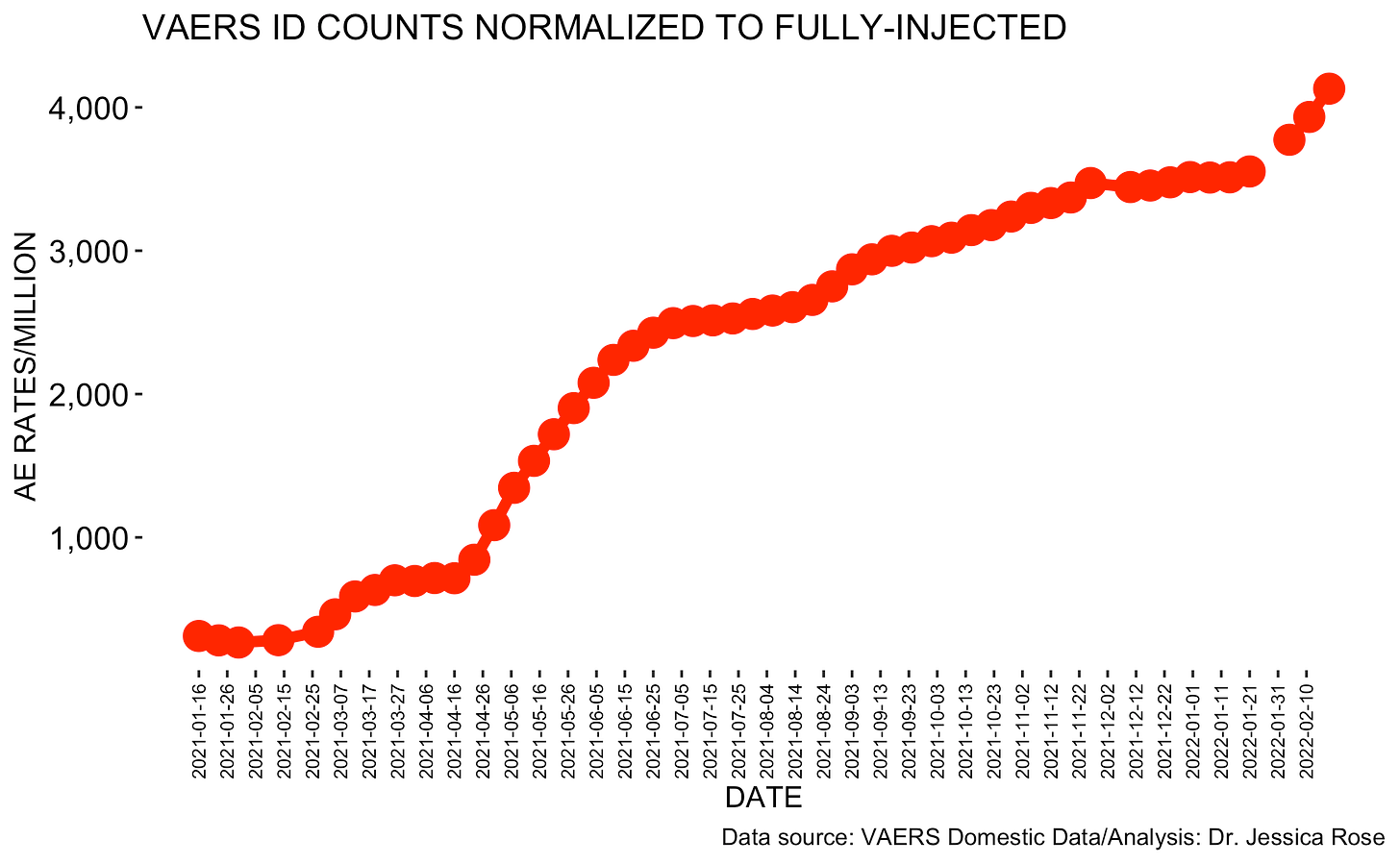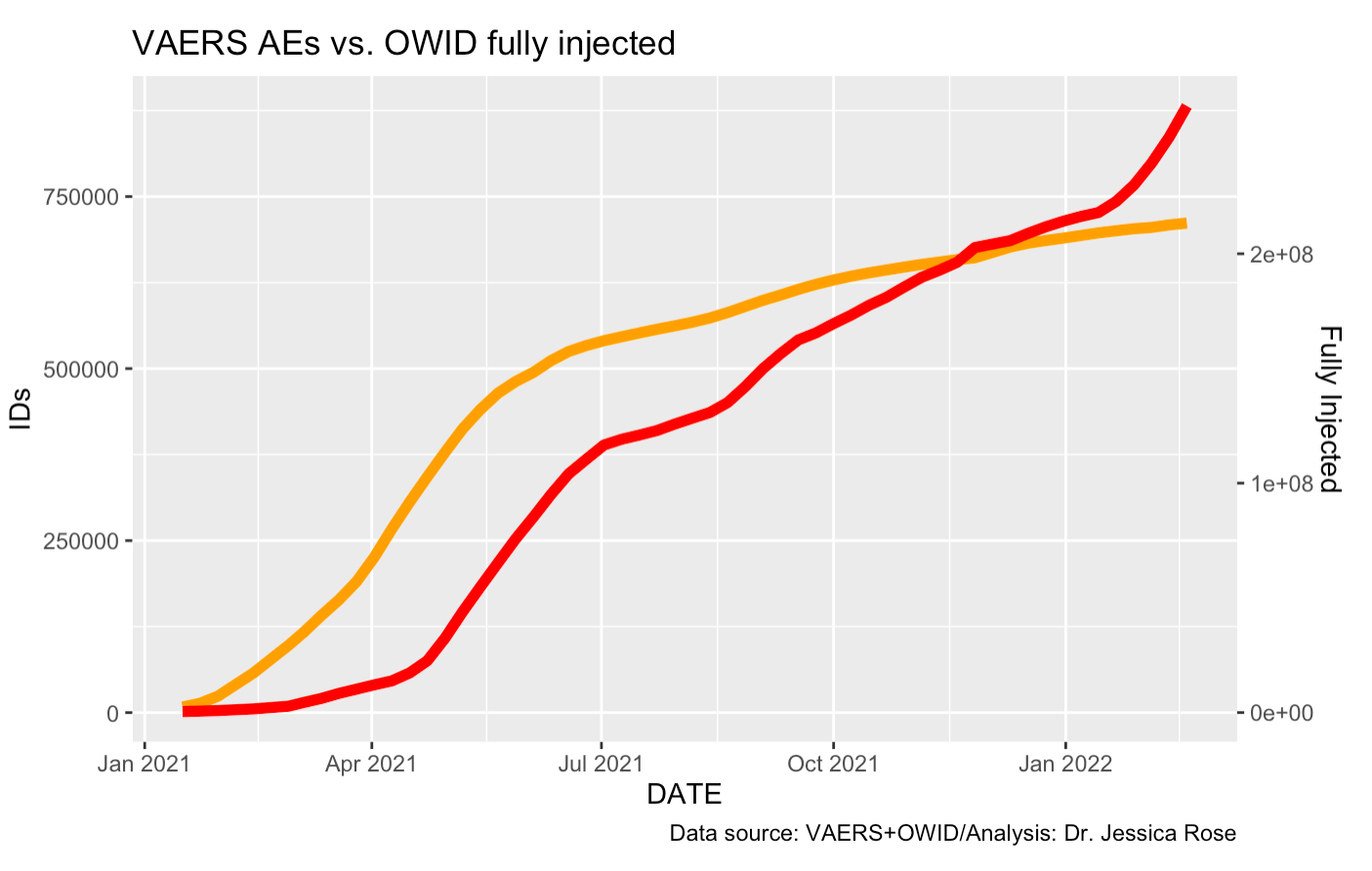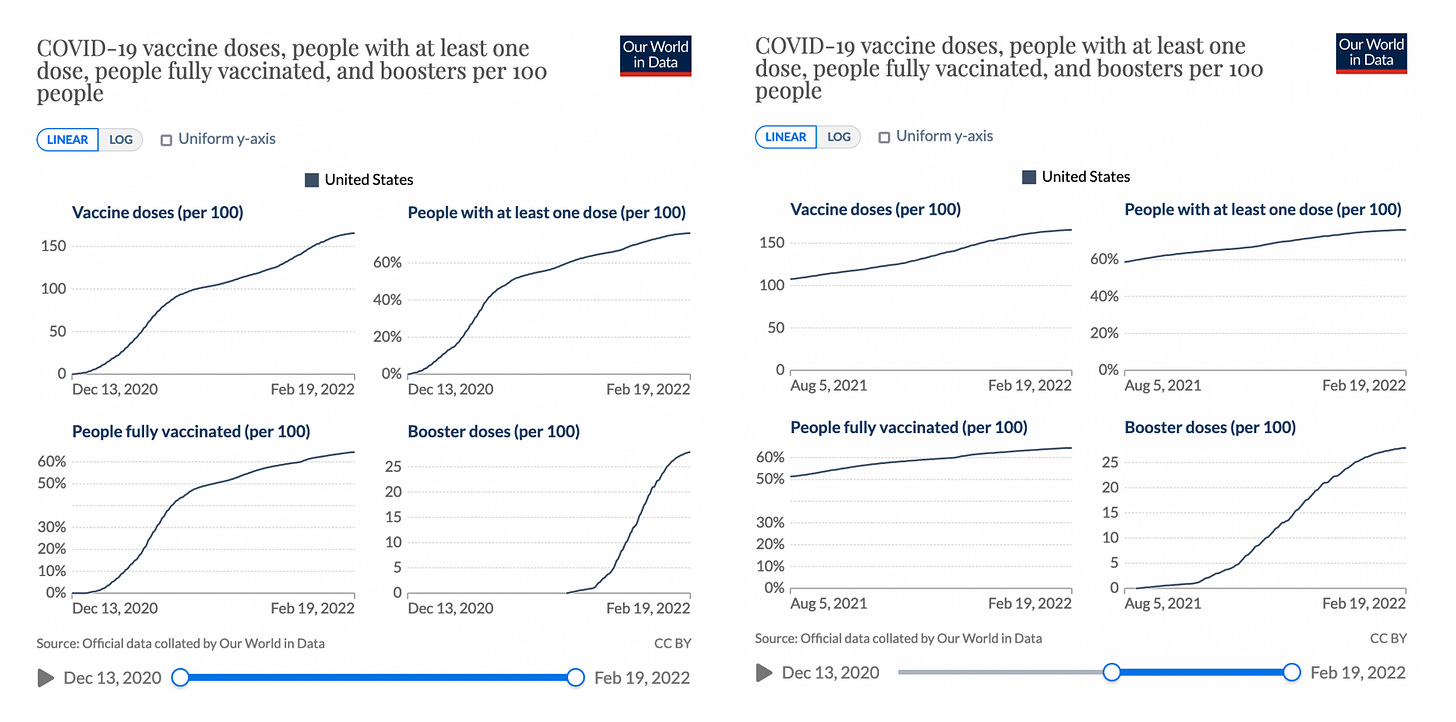Jessica Rose | 23 Feb 2022
Enter the era of the injection-induced immune deficient
For those of you who don’t know, VAERS is the Vaccine Adverse Event Reporting System of the United States. It was deployed in 1990 as a pharmacovigilance tool and serves as a way to detect danger signals that were not detected in pre-market testing or clinical trials. It also works really well when clinical trial data is fraudulent. All pharmaceutical and biological producers have blanket immunity from liability. The data is updated weekly and is available for download by the public. The data is the responsibility of the Food and Drug Administration (FDA) and the Centers for Disease Control (CDC).
I have been on this data since December 17, 2020. The database has been growing steadily since the injection roll-out began on that date in the United States with no sign of slow-down, even when the injections themselves slowed down. As of January 21, 2022, the numbers began rising at a higher rate than for the previous 6 months.

The number of reports being filed are increasing relative to the number of injections being administered. The number of fully-injected people is actually plateauing.
When the data from Our World in Data (OWID) is plotted against the VAERS reports, the growth rates can be compared.

So why is this happening? The boosters? Increase in reporting due to more people learning about VAERS? Backlog catch-up? More adverse events occurring?
It’s likely not the boosters since they started being given out last August. I mean, it’s clear that the boosters appear to have had an effect on the rate of adverse event reporting to VAERS since August but it’s not obvious that they are the cause of the sudden increase as of January 21, 2022.

Could it be an increase in reporting due to more people learning about VAERS? It is interesting to me that the Great Canadian Convoy Rolling started 3 weeks ago. Perhaps their amazing efforts rippled among the American population to the extent that more people actually did become more aware of VAERS and subsequently report with higher frequency? It’s not super likely but the timing is interesting. 😉
I would guess that this is part back-log but most likely, and more predominantly, I would guess that this is due to more people reporting due to more adverse events occurring.


